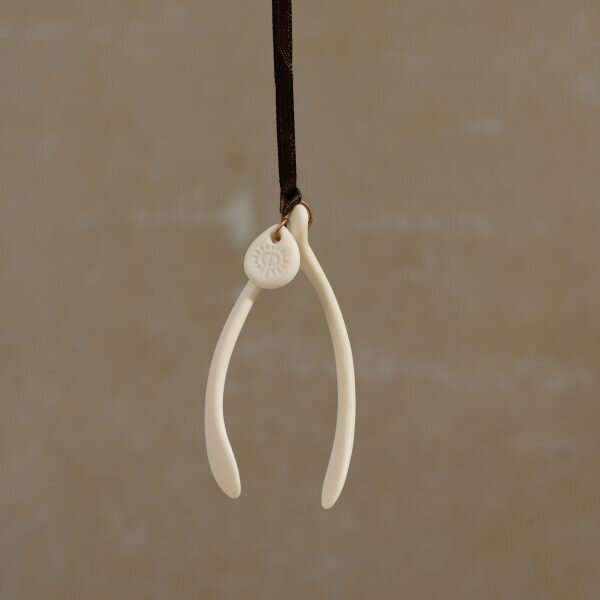Wishbones: Get your lucky break.
In the grand mosaic of life, there are moments when the simplest of objects hold the most profound significance. Among these, the wishbone stands as a symbol of hope, luck, and the timeless human desire for a brighter future.
Bones have a long history of being used for divination — oracle bones, for example, date back to the Shang dynasty in China.
The furcula (or wishbone) is the fusion of a bird's clavicles right above the sternum. Its distinctive, symmetrical shape was probably pretty attractive to osteomancers around the world.
But the modern association between wishbones and good fortune is rooted in the traditions of ancient Italy. When the Etruscans slaughtered a bird, they would let the bones dry out in the sun to preserve their divine powers. They would stroke the dried bones and wish upon them.
Poultry was fairly scarce in Ancient Rome; and that was a problem because there simply weren’t enough furculas (furculae?) to go around. So the Romans, being enterprising people, started breaking them in half, thereby doubling the number of wishbones available.
The Romans passed this practice to the British, who brought it to America — a land full of turkeys — and you can see where this is going right? The modern tradition of breaking the wishbone at the Thanksgiving Day feast was born. These days, revelers are not limited to one wishbone per bird. One can purchase synthetic wishbones to provide more opportunities for wishes or for vegans/vegetarians.
Importantly, your wish is granted only if the wishbone is broken and you get the larger piece. So an unbroken wishbone symbolizes the promise of good luck. Unbroken wishbones were used to make thimble holders in Victorian times.
Incidentally, this practice may also be the origin of the term “getting your lucky break.”
Woman holding a wishbone over her head

Crocheted Turkey Wishbone Thimble Holder, Collection Jim Linderman

Cordial Thanksgiving Greetings
Rookwood Wishbone Wall Hanging

Vintage postcard depicting Thanksgiving tradition of breaking a wishbone

Lucky Strike ad with wishhbone
Crocheted Wishbone Thimble Holder, House of Good Fortune Collection

Rookwood Wishbone Ornament

Vintage postcard depicting Thanksgiving tradition of breaking a wishbone

Vintage postcard depicting Thanksgiving tradition of breaking a wishbone, House of Good Fortune Collection

Vintage postcard depicting wishbone, House of Good Fortune Collection



